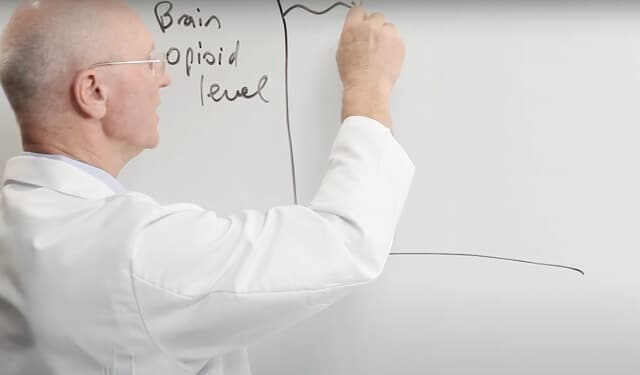Here at the Coleman Institute, we know that drug addiction is a disease. It's not your fault, but it's devastating and it affects an awful lot of people. Since 2002, we've helped over 8,500 people successfully detox off of drugs or opioids and we’re here to help. What I'd like to do is explain to you exactly how we do our accelerated opioid detox. Because I find that when family members and patients really understand what we're doing, it helps them move through the process because it makes sense to them.
Explore the recap of Dr. Peter Coleman’s YouTube video, “Dr. Coleman Explains Accelerated Opioid Detox using the Coleman Method” here.
How Do Opioids Work?
All opioid drugs — Fentanyl, heroin, methadone, Oxycontin — work on the endorphin receptors in the brain.
The endorphin system is in our brain to give us pain relief if we're in a lot of pain, but also to give us energy. Artificial drugs like heroin and others overpower that system and give people a much stronger effect. It feels great, but when it starts wearing off, they feel horrible, and so they've got to keep using. When they don't have it, they go through what we call cold turkey; very, very painful.
More like this: What Is Dopamine & How Does Keep Me Using Opioids?
Trying to Detox Cold Turkey
The best way to think of it is that when patients come to us, they have a brain opioid level.
They've still got the drugs sitting in their brain. When they're using, they use drugs and the level goes up and then it starts wearing off so they have to use more. But if they get put in jail or they go to a regular treatment program, they go through what's called cold turkey, and over seven to 10 days, those drugs come out of the system. It's so painful that most people can't go through it at all. They rob, they steal, they sell drugs, they borrow, they do whatever it takes to get the drugs.
More like this: How Can I Get Off These Bloody Pain Medications?
Ultra Rapid Detox
To get people through that process, which is very painful, we used to do an anesthesia detox called Ultra Rapid Detox. Some people still do this, but we've moved on and found a much better way.
With the Ultra Rapid Detox, you're given naltrexone, which is a blocking drug. It pushes all of the drugs off the receptors in about five minutes. The idea is the patient would wake up and say, "Wow. Thanks, doc. I'm off the drugs and I feel great." In reality, they felt horrible, and it was such a shock to the system that there were even some serious problems and people had to be put in the hospital.
More like this: Why We No Longer Perform Anesthesia Detox
Accelerated Opioid DetoxWe've moved on and found a much better process called the Accelerated Opioid Detox.
UNDERSTANDING ACCELERATED OPIOID DETOX
How Accelerated Opioid Detox Works
The way that works typically is we have people stop using the drugs about 6:00 pm the night before, so by the time they come into us on day one, they're already in mild withdrawal.
We give them sedatives and comfort drugs to get them through the first day.
Then on the third day, they're already a long way detoxed and we can push the rest of the drugs out over about six to eight hours.
We've even improved it over the last 12 years by giving micro doses of naltrexone. Each day we give a little bit of naltrexone and now we're putting people on this curve so that by the last day, it's very easy. They're already almost completely detoxed, and we often can get it done by 1:00 or 2:00 on an outpatient basis. Patients are amazed at how comfortable they feel even though all the drugs are gone.
At the end of the detox, we put people on naltrexone because that blocks the opioid receptors and it helps heal the brain and it helps to decrease cravings, and it helps if they do have a slip-up.
We also use naltrexone implants, which provide a low level of naltrexone for two whole months, and sometimes we put them on Vivitrol, which is a one-month injection.
Conclusion
Patients are amazed at how good they feel. They come back for follow-up visits and most of them have almost no cravings and they're able to get on with their lives and concentrate on their therapy, and they're starting to feel great.


